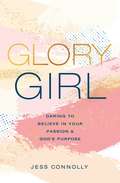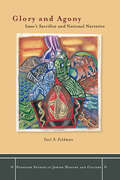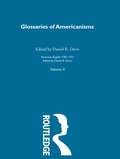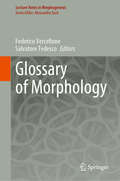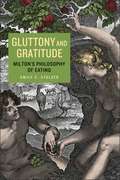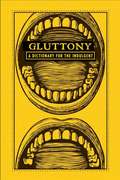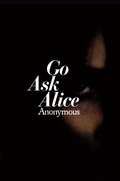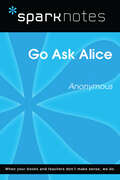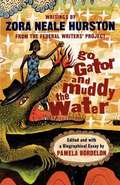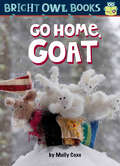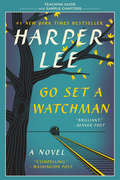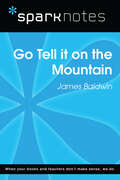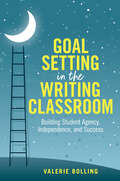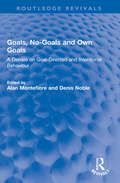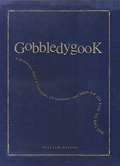- Table View
- List View
Glory Girl: Daring to Believe in Your Passion and God’s Purpose
by Jess ConnollyGod has a purpose for you. But maybe what you&’re meant to be is still a mystery. So where do you start? Jess Connolly will help you get answers to this question and more, no matter where you are in your journey.Glory Girl will jumpstart your search for purpose. In each meaningful chapter (plus room for reflective journaling), Jess&’s wise words will help you: discover the things you are really passionate about, understand your strengths and weaknesses, face your fears, catch the vision, make a plan, and find the confidence you need to make your move—all in the bold belief that God has called you to every step of the journey.Glory Girl helps girls ages 8–12:Recognize their unique, God-given gifts.Fight their fears with faith and truth.Deal with distractions that throw them off course from God&’s plan for them.Stop trying to be &“the best&” at everything and trust that God has a plan for them.Stop comparing themselves to others.
Glory and Agony: Isaac's Sacrifice and National Narrative
by Yael S. FeldmanGlory and Agony is the first history of the shifting attitudes toward national sacrifice in Hebrew culture over the last century. Its point of departure is Zionism's obsessive preoccupation with its haunting "primal scene" of sacrifice, the near-sacrifice of Isaac, as evidenced in wide-ranging sources from the domains of literature, art, psychology, philosophy, and politics. By placing these sources in conversation with twentieth-century thinking on human sacrifice, violence, and martyrdom, this study draws a complex picture that provides multiple, sometimes contradictory insights into the genesis and gender of national sacrifice. Extending back over two millennia, this study unearths retellings of biblical and classical narratives of sacrifice, both enacted and aborted, voluntary and violent, male and female-Isaac, Ishmael, Jephthah's daughter, Iphigenia, Jesus. Glory and Agony traces the birth of national sacrifice out of the ruins of religious martyrdom, exposing the sacred underside of Western secularism in Israel as elsewhere.
Glossaries Of Americanisms: Vol II
by Daniel R DavisAmerican lexicography has a distinguished and familiar tradition. Elwyn (1859) is intended as a corrective response to the excessive identification of Americanisms, but in fact represents what one might term the ‘traditionalist’ position. Fallows (1883) is significant as a treatment of Americanisms and Briticisms for a general audience. Norton (1890) is a specific application to American political life.
Glossary of Morphology (Lecture Notes in Morphogenesis)
by Federico Vercellone Salvatore TedescoThis book is a significant novelty in the scientific and editorial landscape. Morphology is both an ancient and a new discipline that rests on Goethe's heritage and re-forms it in the present through the concepts of form and image. The latter are to be understood as structural elements of a new cultural grammar able to make the late modern world intelligible. In particular, compared to the original Goethean project, but also to C.P. Snow's idea of unifying the “two cultures”, the fields of morphological culture that are the object of this glossary have profoundly changed. The ever-increasing importance of the image as a polysemic form has made the two concepts absolutely transitive, so to speak. This is concomitant with the emergence of a culture that revolves around the image, attracting the verbal logos into its orbit. Incidentally, even the hermeneutic relationship between past and present relies more and more on the image, causing deep changes in cultural environments. Form and image are not just bridging concepts, as in the field of ancient morphology, but real transitive concepts that define the state of a culture. From the Internet to smartphones, television, advertising, etc., we are witnessing – as Horst Bredekamp observes – an immense mass of images that fill our time and affect the most diverse areas of our culture. The ancient connection between science and art recalled by Goethe emerges with unusual evidence thanks to intersecting patterns and expressive forms that are sometimes shared by different forms of knowledge. Creating a glossary and a culture of these intersections is the task of morphology, which thus enters into the boundaries between aesthetics, art, design, advertising, and sciences (from mathematics to computer science, to physics, and to biology), in order to provide the founding elements of a grammar and a syntax of the image. The latter, in its formal quality, both expressive and symbolic, is a fundamental element in the unification of the various kinds of knowledge, which in turn come to be configured, in this regard, also as styles of vision. The glossary is subdivided into contiguous sections, within a complex framework of cross-references. In addition to the two curators, the book features the collaboration of a team of scholars from the individual disciplines appearing in the glossary.
Gluttony and Gratitude: Milton’s Philosophy of Eating (Medieval & Renaissance Literary Studies #1)
by Emily E. StelzerDespite the persistence and popularity of addressing the theme of eating in Paradise Lost, the tradition of Adam and Eve’s sin as one of gluttony—and the evidence for Milton’s adaptation of this tradition—has been either unnoticed or suppressed. Emily Stelzer provides the first book-length work on the philosophical significance of gluttony in this poem, arguing that a complex understanding of gluttony and of ideal, grateful, and gracious eating informs the content of Milton’s writing. Working with contextual material in the fields of physiology, philosophy, theology, and literature and building on recent scholarship on Milton’s experience of and knowledge about matter and the body, Stelzer draws connections between Milton’s work and both underexamined textual influences (including, for example, Gower’s Confessio Amantis) and well-recognized ones (such as Augustine’s City of God and Galen’s On the Natural Faculties).
Gluttony and Gratitude: Milton’s Philosophy of Eating (Medieval & Renaissance Literary Studies)
by Emily E. StelzerDespite the persistence and popularity of addressing the theme of eating in Paradise Lost, the tradition of Adam and Eve’s sin as one of gluttony—and the evidence for Milton’s adaptation of this tradition—has been either unnoticed or suppressed. Emily Stelzer provides the first book-length work on the philosophical significance of gluttony in this poem, arguing that a complex understanding of gluttony and of ideal, grateful, and gracious eating informs the content of Milton’s writing. Working with contextual material in the fields of physiology, philosophy, theology, and literature and building on recent scholarship on Milton’s experience of and knowledge about matter and the body, Stelzer draws connections between Milton’s work and both underexamined textual influences (including, for example, Gower’s Confessio Amantis) and well-recognized ones (such as Augustine’s City of God and Galen’s On the Natural Faculties).
Gluttony: A Dictionary for the Indulgent
by Media AdamsThe Seven Deadly Sins have sliced up the dictionary and taken what's theirs. No one vice is too greedy as each volume prides itself on having more than 500 entries. Word lovers will lust after these richly packaged volumes--and once you've collected all seven, you'll be the envy of all your friends.Gluttony: A Dictionary for the IndulgentReaders can devour word after word after word until they've had their fill. And then they can have some more. This bite-size book serves up a hefty sampling of juicy words. It's a wonderful treat for the Gluttonous.
Go Ask Alice (Anonymous Diaries)
by AnonymousA teen plunges into a downward spiral of addiction in this classic cautionary tale.January 24th After you&’ve had it, there isn't even life without drugs… It started when she was served a soft drink laced with LSD in a dangerous party game. Within months, she was hooked, trapped in a downward spiral that took her from her comfortable home and loving family to the mean streets of an unforgiving city. It was a journey that would rob her of her innocence, her youth—and ultimately her life. Read her diary. Enter her world. You will never forget her. For thirty-five years, the acclaimed, bestselling first-person account of a teenage girl&’s harrowing decent into the nightmarish world of drugs has left an indelible mark on generations of teen readers. As powerful—and as timely—today as ever, Go Ask Alice remains the definitive book on the horrors of addiction.
Go Ask Alice (SparkNotes Literature Guide Series)
by SparkNotesGo Ask Alice (SparkNotes Literature Guide) Making the reading experience fun! Created by Harvard students for students everywhere, SparkNotes is a new breed of study guide: smarter, better, faster.Geared to what today's students need to know, SparkNotes provides:chapter-by-chapter analysis explanations of key themes, motifs, and symbols a review quiz and essay topics Lively and accessible, these guides are perfect for late-night studying and writing papers.
Go Down, Moses (SparkNotes Literature Guide Series)
by SparkNotesGo Down, Moses (SparkNotes Literature Guide) by William Faulkner Making the reading experience fun! Created by Harvard students for students everywhere, SparkNotes is a new breed of study guide: smarter, better, faster.Geared to what today's students need to know, SparkNotes provides:chapter-by-chapter analysis explanations of key themes, motifs, and symbols a review quiz and essay topics Lively and accessible, these guides are perfect for late-night studying and writing papers.
Go Down, Moses: The Miscegenation of Time
by Arthur F. KinneyNo. 148 in the Twayne's Masterwork Series. This book offers a detailed analysis of Faulkner's book Go Down, Moses. It includes insights in race relationships during Faulkner's time, as well as exploring Faulkner's own mixed-race heritage.
Go Gator and Muddy the Water
by Zora Neale Hurston Pamela Bordelon"Researching a work on the Florida Federal Writers' Project, Pamela Bordelon discovered writings in the collection that were unmistakably from the hand of Zora Neale Hurston, author of Their Eyes Were Watching God and one of the leading writers of the Harlem Renaissance. Most of these works are not well known. All of Hurston's novels draw upon her deep interest in folklore, particularly from Florida, her home state. Here we see the roots of that work, from the captivating folktale of the monstrous alligator living in a local lake to her recording of folk songs and her work on children's games and the black church. Of great interest are the transcriptions of a rare interview with Hurston singing gambling and work songs and telling how she learned them." --BOOK JACKET. Title Summary field provided by Blackwell North America, Inc. All Rights Reserved
Go Home, Goat (Bright Owl Books)
by Molly CoxeGoat is cold. He needs a home in the snow! This fun photographic easy-to-read story features the long "o" vowel sound. Kane Press's new series of super simple easy-to-reads, Bright Owl Books, adds Molly Coxe's five fun photographic long vowel stories, which are each only around 100–200 words. Molly Coxe's stories help kids learn to read by teaching the basic building blocks of reading—vowel sounds. With a note to parents and teachers at the beginning and story starters at the end, these books give kids the perfect start on educational success. Bright Owl Books make bright owl readers!
Go Set a Watchman Teaching Guide: Teaching Guide and Sample Chapters
by Harper Lee Amy JurskisWritten in the 1950s but unpublished until recently, Go Set a Watchman is neither a prequel nor a sequel to To Kill a Mockingbird, and attempting to read it as a simple continuation of the story does not do the work justice. As the adult Jean Louise, "Scout," returns to Macomb to visit Atticus, Go Set a Watchman perfectly captures a young woman, and a world, in painful yet necessary transition out of the illusions of the past—a journey that can only be guided by one’s own conscience. While many characters appear in both novels, some significant characters, like Boo Radley and Hank Clinton, exist in only one of the texts. Go Set a Watchman is also strikingly different in style and tone. Thematically complex and highly allusive, it is a novel that demands active and close reading.This ebook contains sample chapters from Go Set a Watchman and a teaching guide to help educators lead their students through an exploration of the themes, structure, and allusive references in Go Set a Watchman. Questions in the Guided Reading and Discussion section will help highlight the development of plot, character, and theme. Because the text features allusions that students are likely to be unfamiliar with, the guide also includes an index of annotated allusions to help facilitate close reading. Prompts for Writing and Research provide topics for longer writing tasks or research projects. Finally, this guide features an additional section that explores the writer’s craft by looking at both To Kill a Mockingbird and Go Set a Watchman.
Go Tell It on the Mountain (SparkNotes Literature Guide Series)
by SparkNotesGo Tell It on the Mountain (SparkNotes Literature Guide) by James Baldwin Making the reading experience fun! Created by Harvard students for students everywhere, SparkNotes is a new breed of study guide: smarter, better, faster.Geared to what today's students need to know, SparkNotes provides:chapter-by-chapter analysis explanations of key themes, motifs, and symbols a review quiz and essay topics Lively and accessible, these guides are perfect for late-night studying and writing papers.
Go Up, Up, Up
by Cindy Peattie Miriam HassanTitle contained within StartUp Phonic Core Program. Not Sold Separately
Go for The Code (A primer for the Explode The Code® Series #C)
by Nancy HallCovering early literacy skills and letter formation, students will learn letters through visual, auditory, and kinesthetic activities that include tracing, matching, tracking, copying, and following directions. Book C teaches students initial and final consonants c, g, l, q, v, w, x, y, and z with an emphasis on phonemic awareness and sound-letter correspondence.
Goal Setting in the Writing Classroom: Building Student Agency, Independence, and Success
by Valerie BollingGoal setting is an integral part of life. But when and how do we teach this important skill to students? And how can we do so in ways that are engaging, rewarding, and nestled into our other priorities in the writing classroom?In Goal Setting in the Writing Classroom: Building Student Agency, Independence, and Success, Valerie Bolling breathes new life into the work of goal setting with students. Bolling guides teachers, step by step, through helping students set goals, monitor progress, revise (and sometimes even abandon!) goals, and celebrate their achievements along the way. Moreover, Bolling illustrates how teachers, themselves, can set their own goals so that they are learning alongside their students and serving as models for them.Goal Setting in the Writing Classroom draws on Valerie Bolling’s experiences as a teacher, instructional coach, and children's book author to offer relevant and engaging stories, lessons, strategies, and graphic organizers to help all students become successful and independent goal setters and writers.
Goals, No-Goals and Own Goals: A Debate on Goal-Directed and Intentional Behaviour (Routledge Revivals)
by Alan Montefiore; Denis NobleFirst published in 1989, Goals, No-Goals and Own Goals presents a stimulating debate between three scientists and three philosophers about the significance and nature of goal-directed and intentional behaviour. At one extreme David McFarland brings into radical question the need for either of these concepts, at least in the scientific study of animal behaviour. At the other extreme, Alan Montefiore argues that such concepts are indispensable to any explication of the meaningful use of language and that we must therefore acknowledge their importance in understanding the nature of human behaviour. Denis Noble uses arguments drawn from computer science and physiology to show that it is incorrect to regard intentions as causes of neural events, even though it is correct to regard intentionality as responsible for our actions. Shawn Lockery outlines how intentional behaviour might be subjected to physiological study. Kathy Wilkes widens the debate by asking some basic questions about the nature of explanation and finally, Daniel Dennett argues how the study of animal behaviour might inform research in Artificial Intelligence. This book will be a useful resource for scholars and researchers of cognitive science, philosophy, psychology, linguistics and physiology.
Gobbledygook
by William Wilsonblad: To strike hard or buffet. kring: To focus on with laser-like intensity. stridhana: Under Hindi law, property belonging to a woman. Two of these words and their definitions are right. One word and its meaning have been made up. But which one? Only if you've read this book will you know for sure!* This fun, fascinating book boasts hundreds of obscure, outdated, and outrageous words. You and your friends will spend hours of fun debating, shouting, laughing, and mulling over such obtuse gems as galliardise, telestich, and quidnunc. And you'll have even more fun guessing the lexicographical imposters, scoring points, and outwitting your family and friends. Let the word games begin! *And you won't find out which one is fake unless you buy the book!
Gobbledygook
by William Wilsonblad: To strike hard or buffet. kring: To focus on with laser-like intensity. stridhana: Under Hindi law, property belonging to a woman. Two of these words and their definitions are right. One word and its meaning have been made up. But which one? Only if you've read this book will you know for sure!* This fun, fascinating book boasts hundreds of obscure, outdated, and outrageous words. You and your friends will spend hours of fun debating, shouting, laughing, and mulling over such obtuse gems as galliardise, telestich, and quidnunc. And you'll have even more fun guessing the lexicographical imposters, scoring points, and outwitting your family and friends. Let the word games begin! *And you won't find out which one is fake unless you buy the book!
Gobbledygook: A Dictionary That's 2/3 Accurate, 1/3 Nonsense - And 100% Up to You to Decide
by William Wilsonblad: To strike hard or buffet.kring: To focus on with laser-like intensity.stridhana: Under Hindi law, property belonging to a woman.Two of these words and their definitions are right. One word and its meaning have been made up. But which one? Only if you've read this book will you know for sure!*This fun, fascinating book boasts hundreds of obscure, outdated, and outrageous words. You and your friends will spend hours of fun debating, shouting, laughing, and mulling over such obtuse gems as galliardise, telestich, and quidnunc. And you'll have even more fun guessing the lexicographical imposters, scoring points, and outwitting your family and friends.Let the word games begin!*And you won't find out which one is fake unless you buy the book!
Goblin Market
by Christina RossettiSisters Lizzie and Laura meet the goblin fruit sellers in the evening. Laura eats the fruit and begins to waste away from longing. Lizzie finds a way to trick the goblins and save her sister. Goblin Market was originally published in 1862 and has been republished several times since. At this time, very few stories had heroic females, but this poem provides a female who takes action - she deals with the sly goblins to save her sister, she does not wait passively for someone else to provide the rescue.
